When it comes to finding the right hiking boots, it’s all about getting the perfect fit. Not too loose, not too tight. But how can you be sure that your boots are the right size? In this guide you’ll find essential advice and useful tips on how to spot the right size so that you can confidently enjoy all your outdoor adventures!
How to tell if hiking boots are too big?
Your boots should be snug and comfortable without being too tight or too loose. If the boots are too big, you may end up with blisters or sore feet during your hike. Here are some tips to help you determine whether your hiking boots are too large.
Check the Toe Area
The most important area to check is the toe box. This is the space at the front of your boot where your toes rest. Your toes should have a “fingers-width” of room in front of them, so that you can wiggle them without feeling cramped or too constricted. If you find that there’s too much room between your toes and the front of the boot, then they are likely too big for you.
Go for a Walk
The best way to determine if your boots fit correctly is to go for a walk. Put the boots on and start walking around in them. Take note of any areas that feel too loose or tight, as well as areas where you feel blisters or chafing. Ensure there’s enough room in the toe box so that your toes don’t crowd up against the end of the boot when you’re walking. If you find that your feet are sliding around inside the boots while you walk then they may be too big for you.
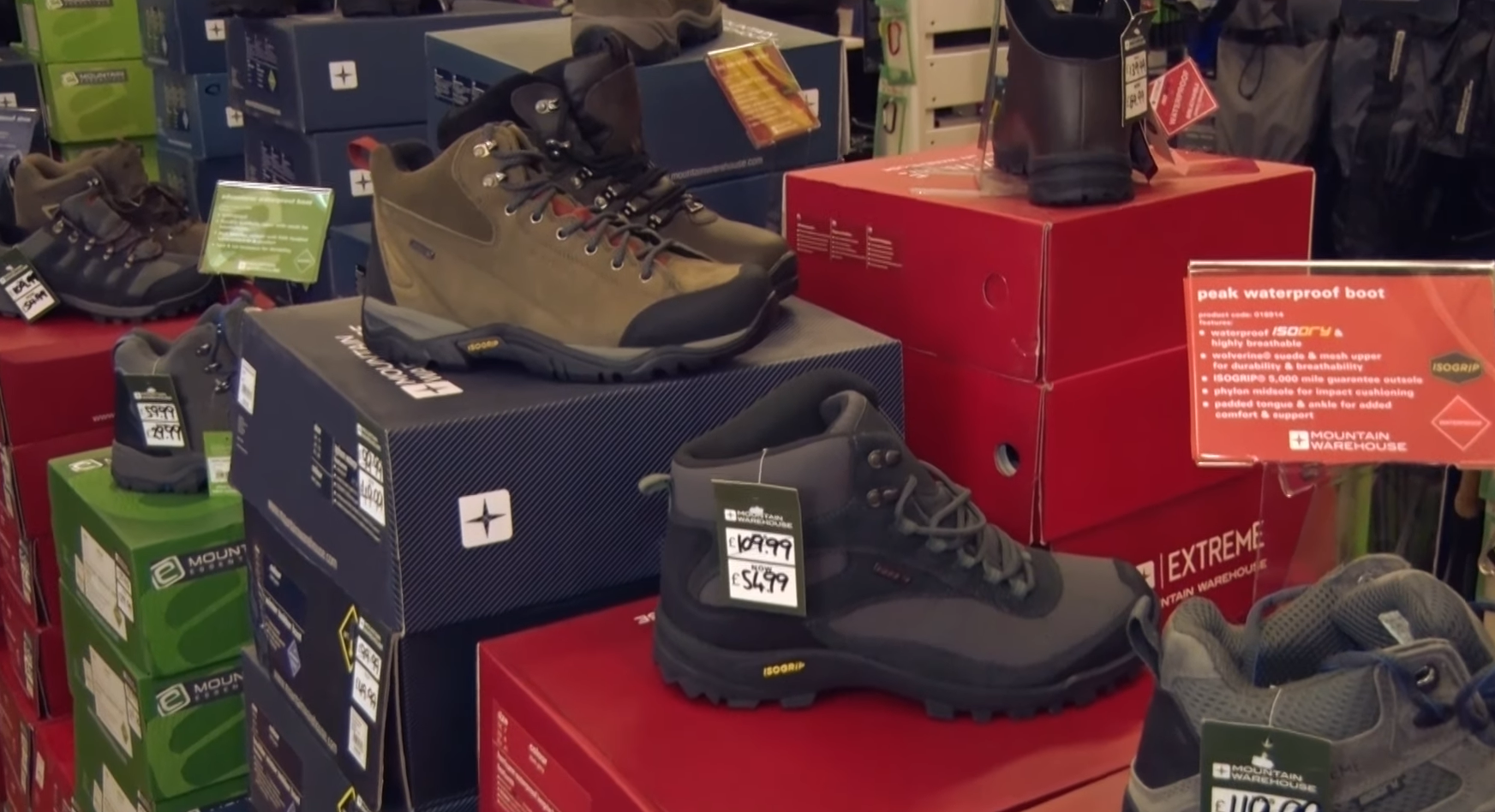
Check for Support
Hiking boots are designed to provide support and stability when you’re walking. This is especially important if you’re hiking on uneven terrain or carrying a heavy backpack. Ensure that your boots fit snugly around the midsection of your foot so that they don’t shift around and cause discomfort while you walk. If your boots feel too loose in this area, then they may be too big for you and should be replaced with a smaller size.
How are hiking boots supposed to fit?
You should ensure that the boots are snug without being too tight or too loose, as this will ensure you have the support and stability you need while on a hike. Your toes should be able to move slightly in the tips of your boots, while your ankles and heels should be firmly supported. Wear the right socks for hiking – thick ones can act as extra cushioning and prevent irritation when wearing tight-fitting boots. If your feet swell during long hikes, it’s best to go up half a size so that they don’t become too cramped or uncomfortable over time.
Tips on Picking Hiking Boots
The right hiking boot is an important part of any outdoor adventure. Here are some tips on what to look for when purchasing a pair of hiking boots:
- Size: It’s essential that you get the right size. Ensure your toe has enough room so it won’t rub against the front or sides of the boot. Your toes should also have enough space to wiggle freely in the boot.
- Comfort: When trying out a pair of hiking boots, take them for a test walk, preferably on terrain similar to what you plan on trekking on. Pay attention to how the boot flexes and if it puts pressure on specific areas of your foot. Your feet should feel comfortable in the boots, with no slipping or restriction. If you’re experiencing pain after a few minutes, the fit is not right for you.
- Design: Hiking boots come in many designs and models that are suited for different activities. Look for a waterproof design if you plan on crossing streams or hiking through wet conditions, as well as a good tread pattern that will provide you with enough grip to stay safe during your hike.
Remember, comfort is key when it comes to choosing hiking boots – so don’t be afraid to try on multiple pairs until you find the perfect fit. With these tips, you’ll be ready to hit the trails in no time!
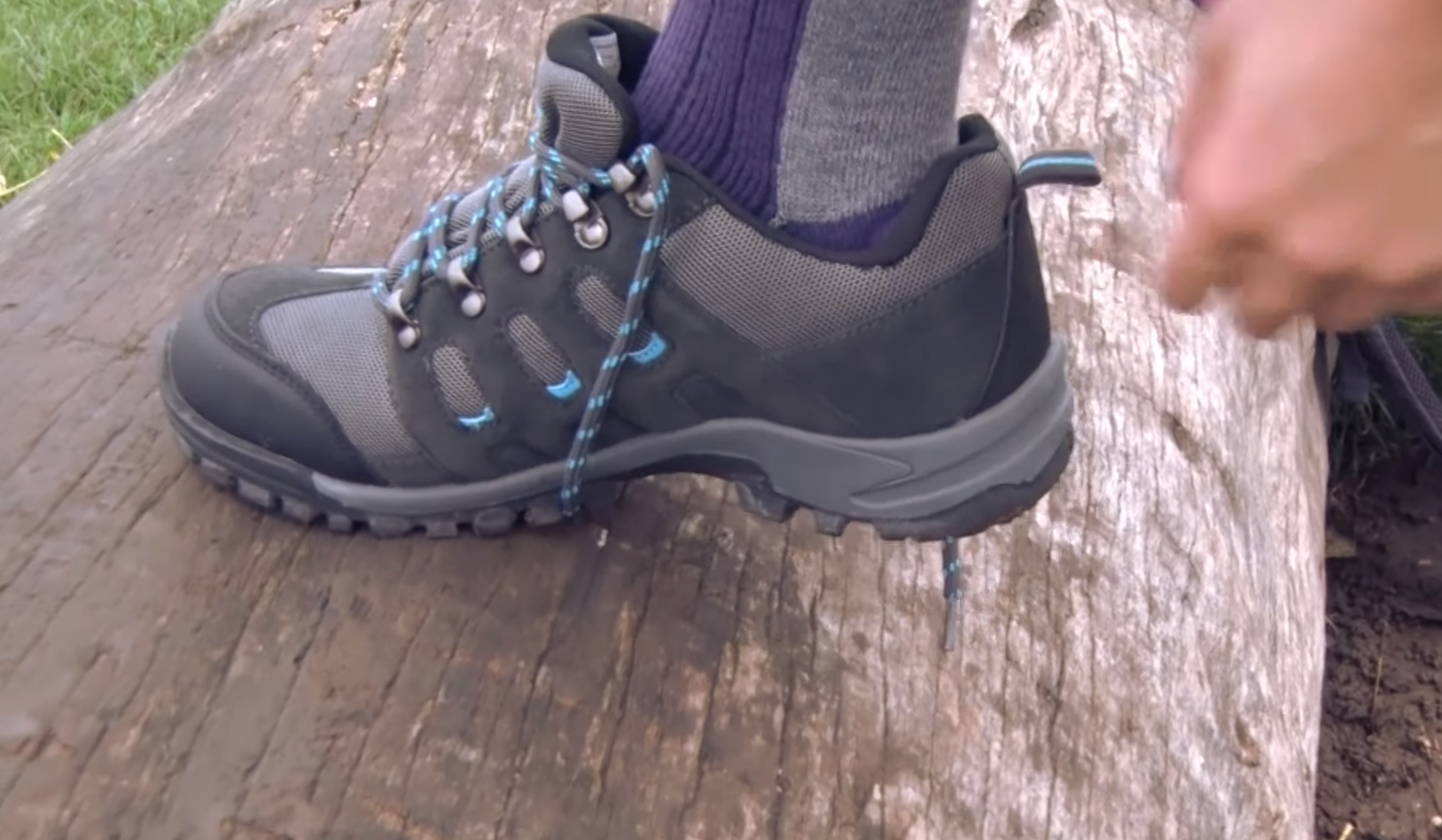
Check The Length Of The Hiking Boots
If the boots are too long or too wide, they can cause pain and discomfort. To check the length of the boots, stand up straight with your feet together. Place your toes against a wall and have someone measure from the heel of your foot to the end of your longest toe. This will give you an accurate measurement of how long your foot is so you can compare it to the size of the boot.
It’s also important to make sure that your toes don’t press up against the toe box when walking in the boots. If this happens then you should go down a size as this indicates that they’re too big for your feet. Additionally, when trying on hiking boots be sure to wear thick socks like those used for hiking or trail running to ensure a snug fit once out on the trails.
Check The Width Of The Hiking Boots
Not only should you be mindful of your own foot size, but also the type of terrain you’ll be walking on and how much weight you may be carrying in your backpack. A good rule of thumb is to select shoes with enough room for your toes without them feeling cramped or squashed.
If you find that the sides of your feet are rubbing uncomfortably against the inner lining, then it’s likely that the width is too big for your feet. Consider how quickly your feet will grow or shrink depending on temperature and water intake levels. If you’re planning a long hike, you may want to pick up some comfort insoles or gel inserts that can provide extra cushioning and arch support. This will help reduce the strain on your feet from carrying heavy weight, as well as prevent blisters from forming.
Additionally, check how tight the laces are around your foot. If they’re too loose and not providing enough grip, then this could also be an indication that you need to go down a size. The same goes for if you find yourself having to loosen them constantly throughout day hikes; it could mean the boots are simply too big for your feet!
Consider how much toe-wiggling space there is in the front of the shoe.
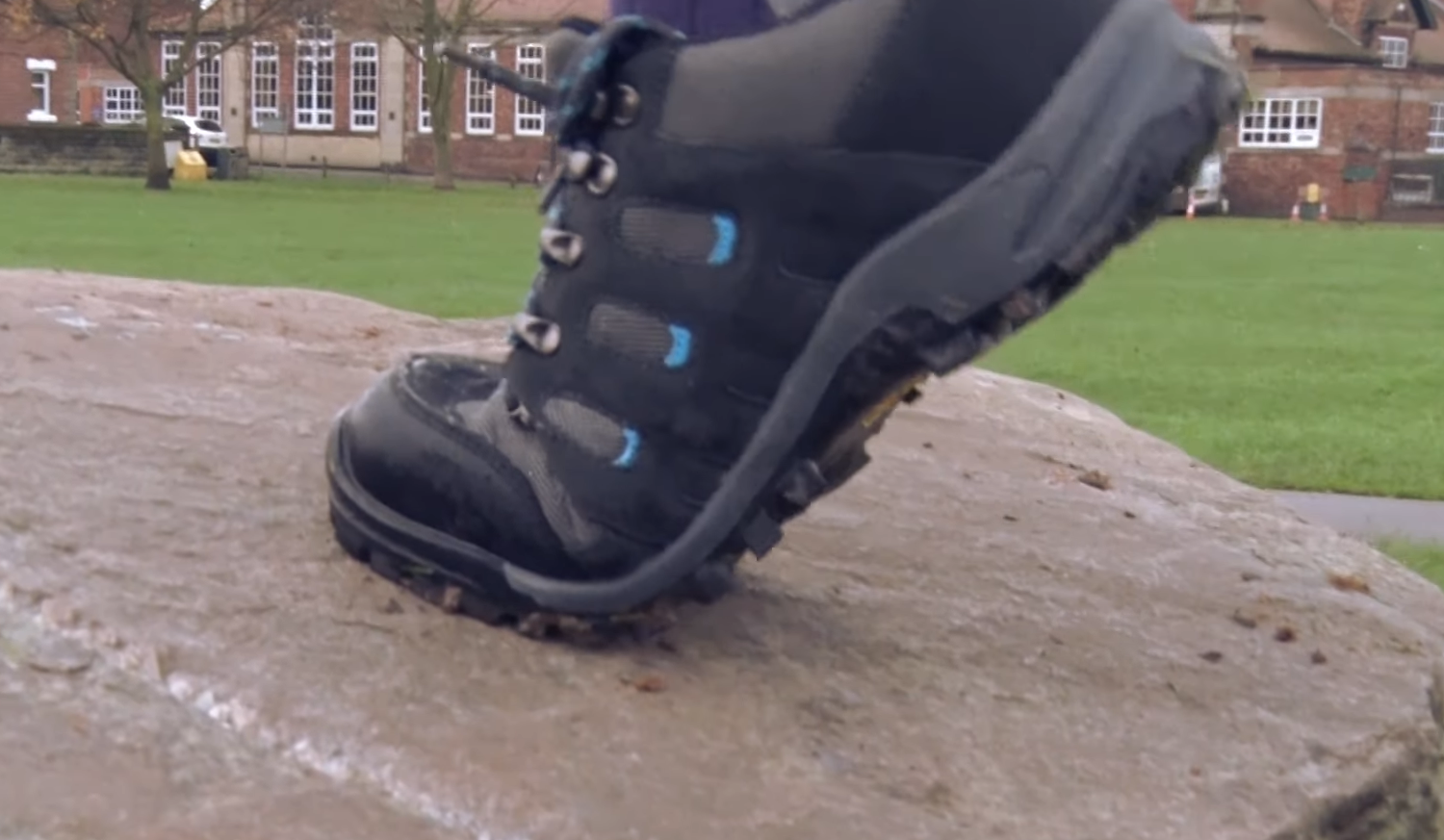
Avoid A Heel Lift At All Costs
The last thing you want on a hike is your feet slipping out of your boots because they’re too big. A good rule to follow is to avoid any heel lift whatsoever. It’s important to make sure that the heel of your foot is snugly nestled in the back of the boot and does not move up and down when you walk. If there’s even a bit of a gap between the heel and the back of the boot, it’s likely too big for you and you should look at a smaller size. Another great tip is to test this out several times while wearing the socks that you plan on hiking with so that you have an accurate fit when actually out on the trails. You may find that one type of sock works better than another to give you the perfect fit.
Be mindful of lace-up boots. Make sure that when properly laced up, they hug your feet and ankle without being too tight. The laces should feel snug but not overly constricting, and you shouldn’t have any extra materials bunching up or anything like that. If so, then it might be a sign that the boots are too big for you after all. Tightening the laces can help as well if the material is really baggy and loose around your foot. Be sure to double check before heading out on your hike – an ill fitting boot can make for a very uncomfortable experience!
Always try them at the end of the day
To get a better idea of how hiking boots will fit during long hikes, it’s recommended to try them on at the end of the day when your feet are swollen and tired. If possible, try them with your regular hiking socks so that you can get an idea of both the fit and comfort level.
Bring along the exact pair of socks you intend to wear during the hike
That means if you plan to wear wool in winter or thin liners in summer, bring them with you. The thickness of your socks can greatly affect how well a boot fits and its comfort level. If possible, avoid wearing thick socks that will make the feet sweat and swell inside the boots. Doing this helps ensure that the fit of the boots is not affected as much when worn with different sock types.
The insoles also help take up any extra space in the boot that might cause your heel to slip. It may be a good idea to buy boots slightly larger than what you normally wear so that you can add the insoles and still maintain a comfortable fit.
Finally, if at all possible, it’s best to try on the boots after a full day of walking or standing as this will give you an accurate representation of how they feel when your feet are tired. This is especially important for people with wide feet who tend to swell while hiking long distances. Trying them out in this way helps ensure they don’t end up feeling too tight once on the trail.
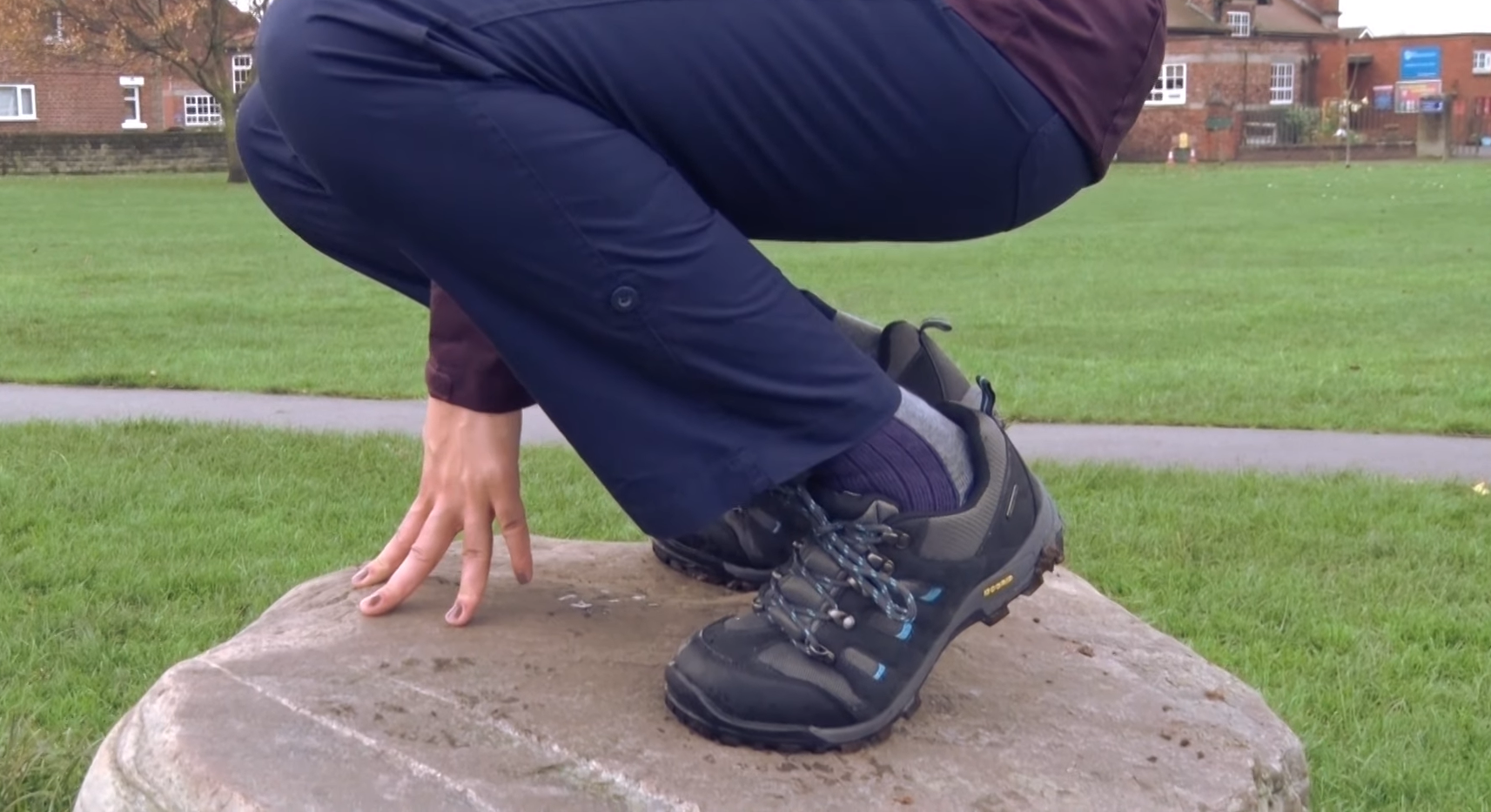
Walk at different speeds and try diverse elevations
Now that you’ve got your boots on, it’s time to test them out. Put a few steps in the shoes and start walking around at different speeds. If the boots are too big, you’ll feel like there’s too much room for your feet to move inside of them while you walk.
If your toes are hitting the front of the boots when you walk uphill, it might be a sign that they’re too tight. However, if they’re slipping forward while walking downhill, that can mean that the boots are too big.
Buy hiking boots from a physical store
If possible, bring a pair of your favorite socks with you when you go shopping for new boots, as this will help ensure a proper fit.
Don’t be tempted to buy a bigger size than necessary even if it feels more comfortable at first – bigger sizes tend to cause blisters due to excessive movement within the boot, which can ruin your outdoor adventure! If a certain style or type of hiking boot doesn’t feel right upon trying it on, move on to another option until you find the perfect fit.
Another word of advice – don’t be tempted to buy a pair for the sole purpose of growing into them over time. Your feet may not grow evenly and this could lead to an uneven weight distribution in your boots, causing even more blisters or discomfort while walking. Instead, focus on finding the right size and type from the start so that you can enjoy a comfortable hike every time!
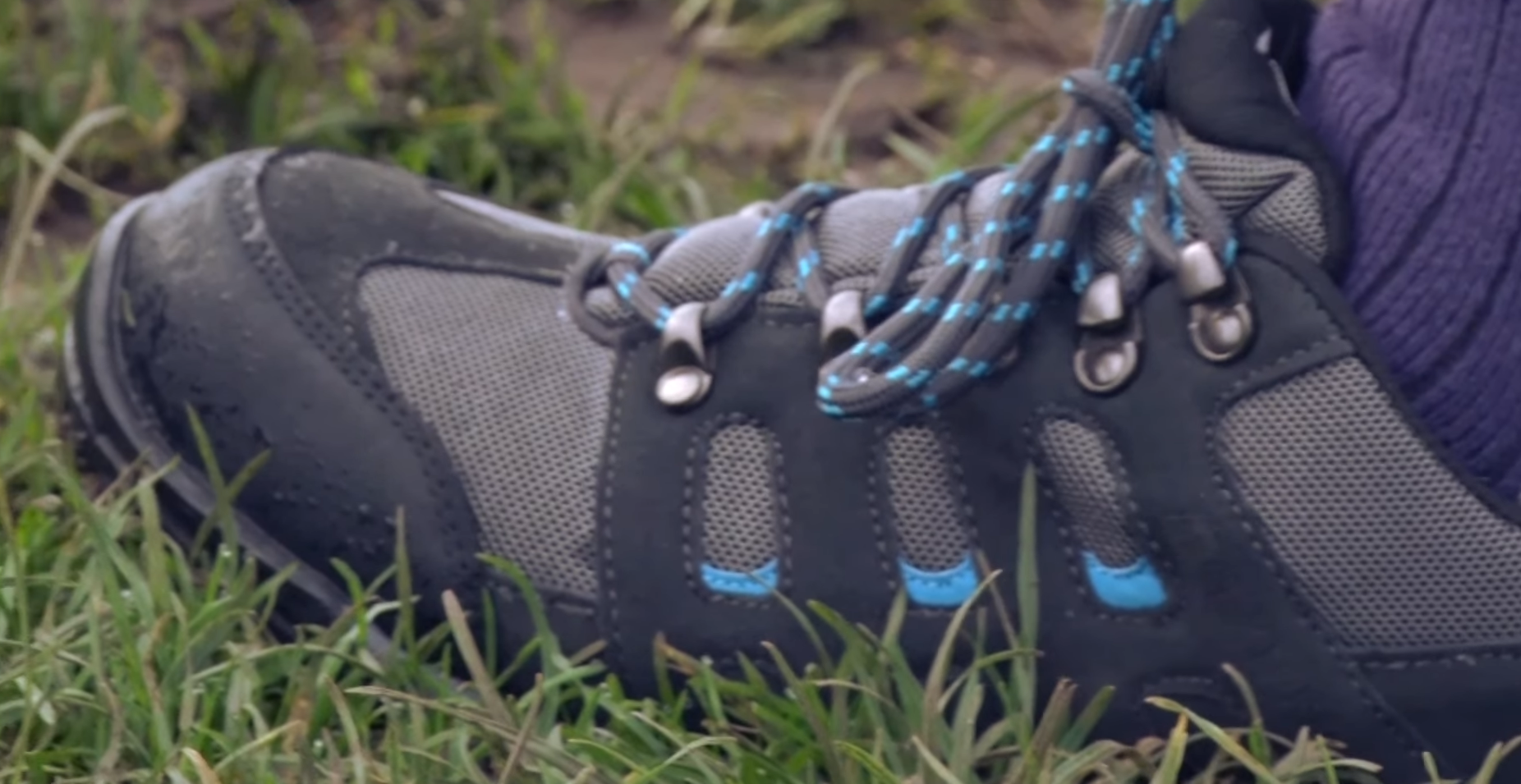
Foot measurement for hiking boots purchased online
Use the following steps to make sure that you get the right size:
- Measure your foot length with a ruler or yardstick by placing it against the longest part of your foot (from heel to toe). Measure both feet since they can be different sizes!
- Measure the circumference around the ball of your foot using a measuring tape and record both lengths in inches and centimeters.
- Compare these numbers with the manufacturer’s sizing chart (which is usually included on product pages) and select a size based on this information. It’s important to buy boots that fit snugly around your feet to ensure you have the best support and protection from the elements. [1]
If you’re still not sure which size is right for you, don’t hesitate to reach out to the customer service team of the store or manufacturer — they can provide additional advice and assistance with finding a suitable size.
Extra tips to follow buying hiking boots too big
- Ultra-tight fit: The most important factor for every hiker is comfort. When trying on a new pair, ensure it fits snugly but not too tight so that it causes any discomfort when walking.
- Heel slipping: Ask yourself, “Can I slip my heel out of the boot easily?” If so, it’s likely too big and should be replaced with a smaller size. However, if your heel stays firmly in place without slippage, you’re golden!
- Room to wiggle toes: Toes need room to move during activities such as ascending or descending mountains which requires flexibility in the front of the shoe. Make sure there’s enough space for your toes to wiggle freely and not feel cramped.
- Foot pain: If you experience any discomfort or foot pain when wearing the boots, it’s an indication that they are probably too big.
- Sock thickness: Consider your sock thickness; if you plan on wearing thicker socks with your boots, ensure to try them on with those anticipated socks first! Otherwise, you risk buying boots a size too large in anticipation of layering up on socks for the colder months.
Following these simple steps should help guide you through finding the right fit for your hiking boots so you can tackle every adventure without worry! Finally, remember to break in the shoes prior to taking them out for a hike by wearing them around the house and on short walks. This will help to ensure they’re comfortable and not too big when you go out for longer hikes or treks.
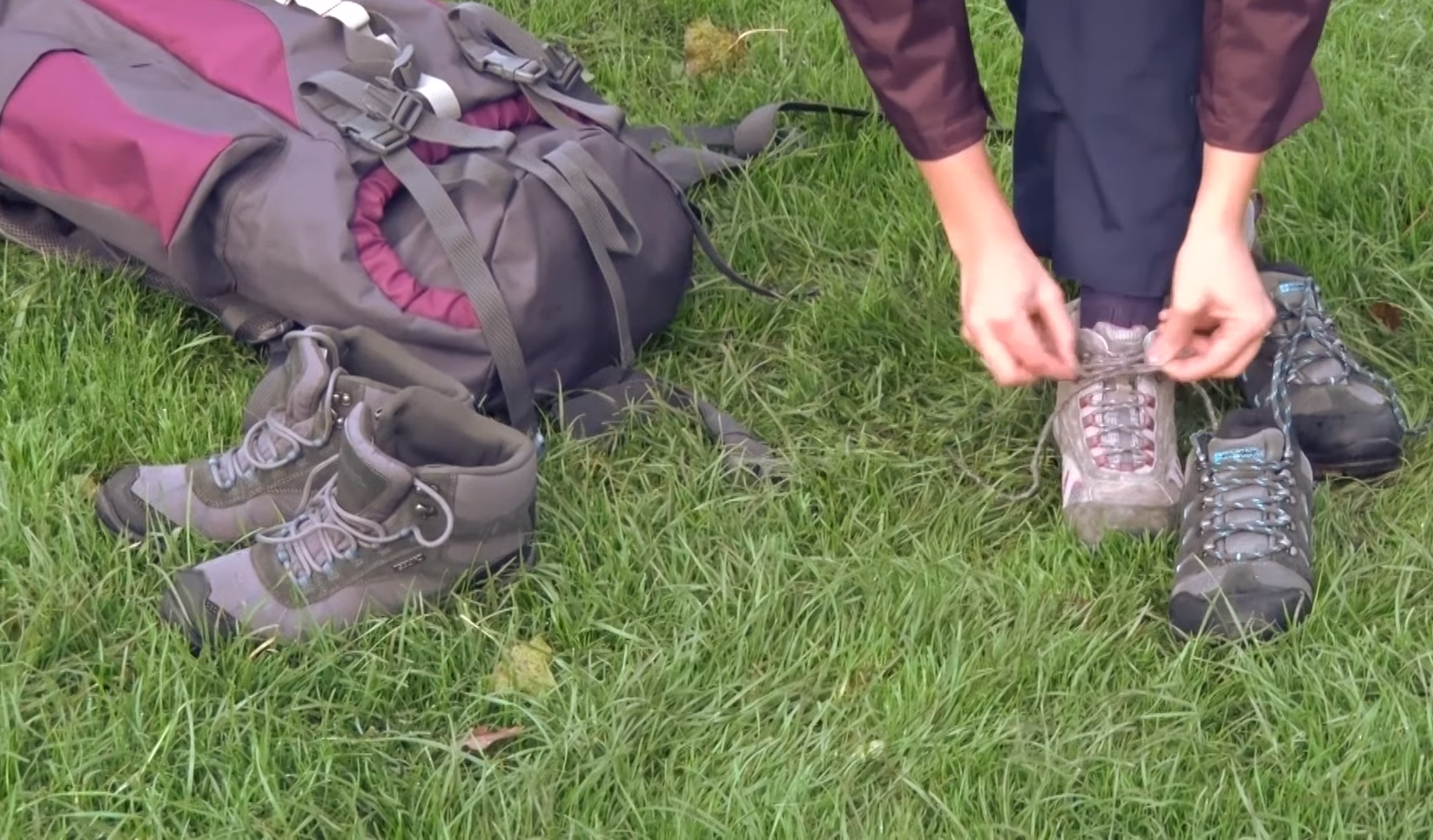
Solutions if your hiking boots are too big
Here are some solutions for when your boots are too big:
- Use Extra Socks or Insoles: Wearing multiple pairs of socks is an easy way to fill up extra space in the boots and make them fit snugly. You can also use insoles to take up some of the space if needed. For best results, look for socks specifically designed for outdoor activities like hiking, as these will be more durable than regular cotton or wool socks.
- Try Using Lacing Techniques: There are special lacing techniques you can use to cinch up the boots. For example, try using the “heel lock” lacing technique, which involves pulling both sides of the laces tight at the top before cinching down on either side of the ankle. This will help keep your heel locked in place, reducing any slippage that may occur due to a too-large boot size.
- Have Them Professionally Adjusted: You can always take your boots to a professional shoe repair shop and have them adjusted to fit better. The repair shop should be able to stretch out the material or add padding where needed for a more comfortable fit.
- Consider A Different Boot Size: As a last resort, you may need to consider buying a new pair of hiking boots in a different size. If you’re not sure what size would be best for your feet, talk to an expert at the shoe store who can measure your feet and help you find the right fit.
Wear an extra pair of hiking socks
This is because the additional layer will help fill in any empty or loose spaces inside the boot and give you a better sense of how the boot fits with thicker padding. You should also make sure the socks are made from sweat-wicking synthetic material, as this will allow your feet to stay dry when you’re out on the trail. Additionally, if you plan to use insoles with your boots, ensure to try them on with both layers of socks for an even more accurate fit.
Finally, once you’ve put on your two pairs of socks, lace up your boots and walk around for a few minutes. This will give you a better feel for how they fit your feet and whether or not there is too much room inside the boot. If you notice any excessive slipping in the heel area when walking, this could be a sign that the boots are too big.
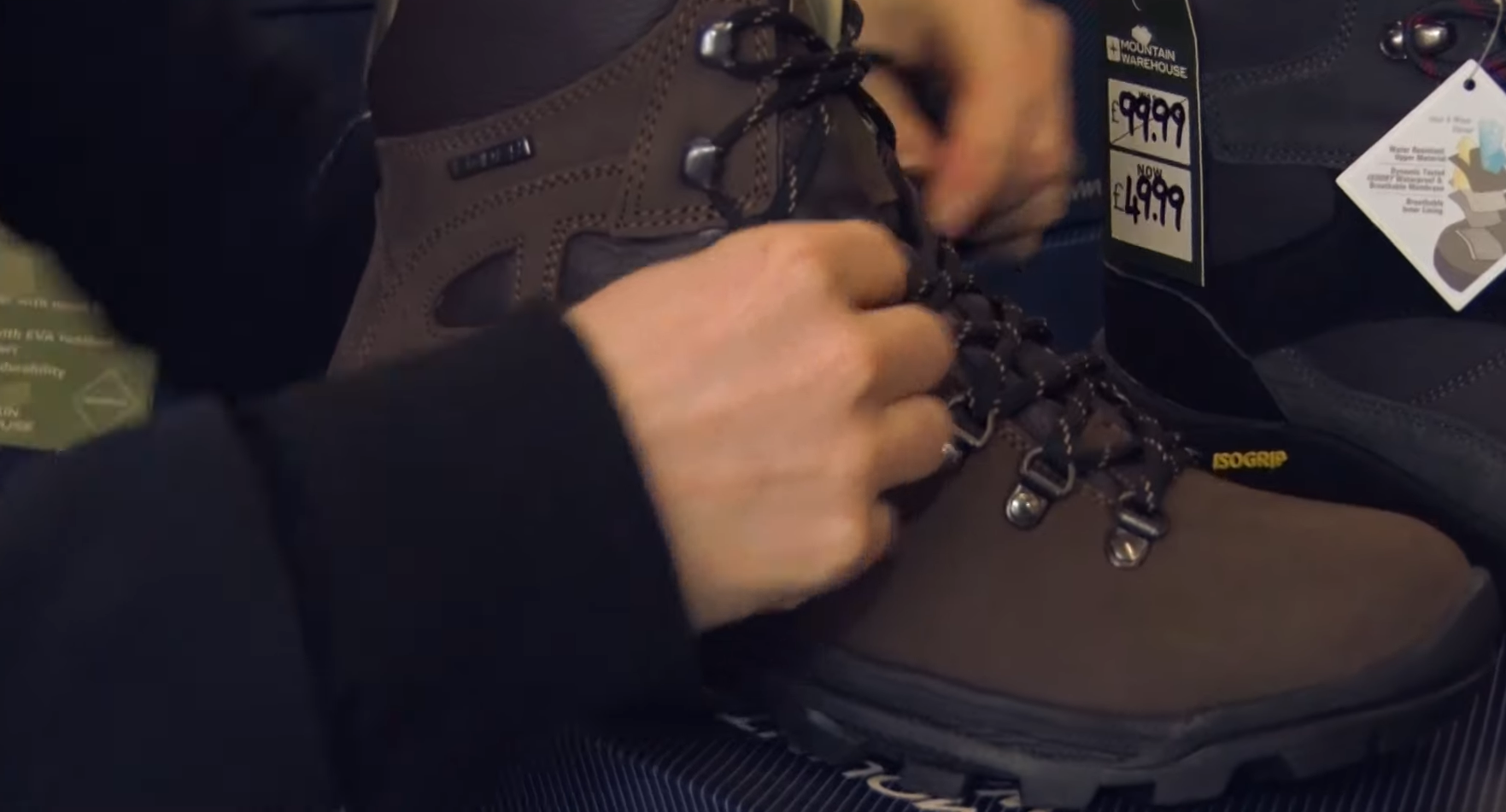
Tighten up the hiking boots’ laces
Tightening the lacing on your boots is a good way to check if you have the perfect fit. Start with loosening up the laces and then proceed with tightening them back up. If your feet feel comfortable and there’s no pain or discomfort when tying, then it’s probably a good fit. However, be careful not to tighten too much as this might make it difficult to move your toes comfortably or cause any circulation issues.
Lastly, the snug fit of your hiking boots is also very important. If your feet feel comfortable but the laces seem to be tight enough to restrict movement, then it may not be necessary to go down a size. You just need to make sure that there is no pain or discomfort when walking in them.
Use makeshift mediums as toe box insert
If you’re not sure, use a makeshift medium to give yourself an idea of how your boots fit. To do this, insert something like a rolled up piece of newspaper or towel into the toe box (the front portion of the boot) and try them on again. If it’s still uncomfortably snug, then the boots might be too small for you. On the other hand, if there isn’t any snugness at all and your feet move around a lot in the footwear without any constraints, then it’s possible that they are indeed too big for you. The ultimate answer lies in comfortability – if your feet feel comfortable after inserting temporary inserts in the toe box, then this could be a sign that the boots are the right fit. If not, then it might be time to size up or down.
Get insoles for hiking boots too big
If your boots are too big, you can try to make them fit better by purchasing insoles. Look for a pair of insoles that will fit comfortably and securely inside the boot – you don’t want them to slip or slide around as you move. Ensure to go with an insole designed specifically for hiking boots so that it offers maximum protection against shock absorption and impact. You may even find insoles that come with breathable liner material, which can help keep your feet cool and dry while you’re out on the trails. With some patience and care, using insoles for boots too big can help you make your hike much more comfortable and safe.
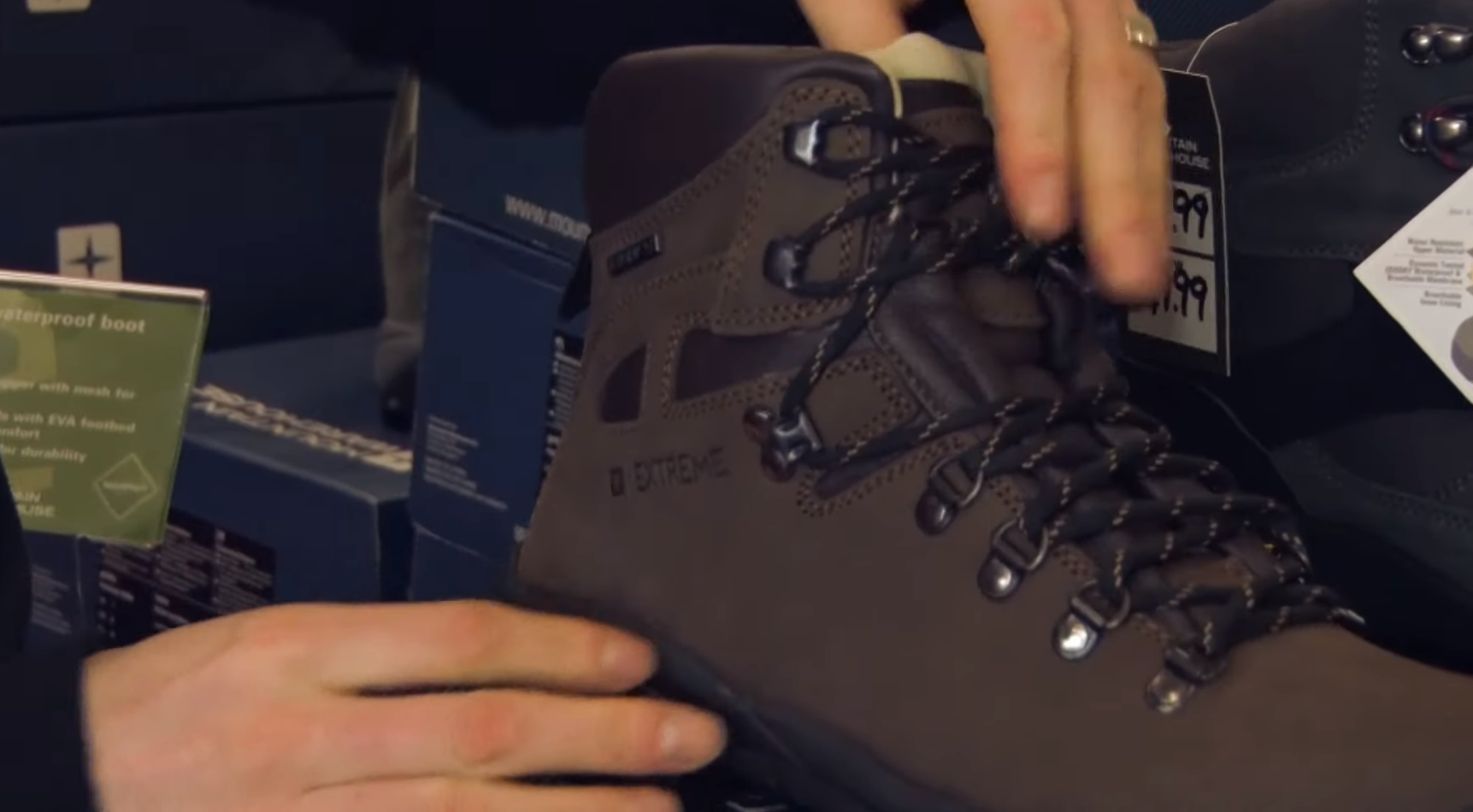
Consider ball-of-foot pads
When you walk, your feet need enough support from the shoe so that your heel and toes don’t slip around with every step. If there’s too much space between your foot and the inside of the boot, then adding a ball-of-foot pad may help fill in the gap. This can provide extra cushioning for your foot while walking or standing for long periods on hard surfaces. You can find these at most sporting goods stores or online retailers, but make sure to get ones specifically made for hiking boots as they have special features like grippy rubber that will keep them in place no matter how rugged the terrain gets. [2]
FAQ
How do you know if your hiking boots are too big?
The best way to tell if your hiking boots are too big is to put them on and take a few steps. The fit should be snug but not so tight that it’s uncomfortable. Ensure there is enough room in the toe box for your toes to move around, without blocking circulation or creating blisters.
If you have an old pair of insoles, you can try adding them to the boots to see if they help with the fit. Another trick is to add extra socks or use thicker socks than normal. This can fill up some of the extra space inside the boot, making them more comfortable and secure when walking or running.
Lastly, pay attention to any areas where your foot slides around in the boot, as this is a sign that they’re too big. If your boots regularly slip off when you walk, then it’s definitely time to go up or down a size.
Bottom line: if you feel any kind of discomfort or instability when trying on new hiking boots, try again with either a bigger or smaller size until you find what works best for you. Always take some time to make sure the fit is just right before heading out on your next adventure! [3]
Is it OK if hiking boots are a little big?
No, it’s not recommended to buy hiking boots that are a bit too big. The reason is because your feet will be able to move around in them more than necessary and this can lead to blisters, soreness and other foot issues. It is better for the boot to fit snugly with no extra room or gaps between your foot and the inside of the boot. If you buy boots that are too big, you won’t get as much support as someone who has boots that fit properly.
To find out if your boots are too big, you can use the following tips:
- Walk around in them and test how they feel on your feet. Do you feel any gaps between your toes or heel? Or does the boot fit snugly with no extra room?
- Wear two pairs of socks when trying on the boots. This will help fill in any additional space that may be present if the shoe is too big.
- If possible, try walking up and down a hill to see how the boot feels when going up and down inclines. Does it feel comfortable or are there areas that rub against your feet?
- Consider any socks that you may be wearing while hiking as they will add extra bulk to the boot. You want to ensure your boots are not too big when combined with thicker, warmer socks. [4]
By following these tips, you should be able to tell if your boots are too big or not. Remember, it’s important to get the right size of boots for your feet so that you can stay comfortable and safe on the trail!
What happens if walking boots are too big?
If your walking boots are too big, they won’t provide you with the necessary support and stability. This can lead to unnecessary strain on your feet, ankles, and legs which can cause discomfort and even injury. Additionally, too-big hiking boots will not keep your feet dry if you encounter wet surfaces or rain. As a result, you may end up with blisters or other skin irritations that make it difficult to finish your hike. Having ill-fitting boots can also be dangerous when traversing rocky terrain as the extra movement of the foot within the boot increases your risk of slipping or tripping. [5]
How much extra space should you have in hiking boots?
Not only should the boot be snug around your foot, but you should also have some extra space for movement and comfort while walking. The amount of extra space you want depends on personal preference as well as the terrain you plan to hike on.
If you’re planning on taking short hikes with little elevation change or uneven surfaces, then a half-inch gap between your longest toe and the tip of the boot should suffice. This will give room for natural foot expansion without compromising support or stability during your hike.
On more technical trails with greater elevation changes and rocky surfaces, you may prefer an extra bit of room. In this case, a full inch of space between your longest toe and the tip of the boot is ideal. This will give you enough wiggle room for your foot to expand during extended hikes without causing instability in your gait or compromising support.
Finally, if you’re planning on taking long-distance treks, then it’s best to go for even more extra space – up to an inch and a half. That way, your feet have plenty of breathing room throughout the journey and won’t get cramped up from being confined for too long.
Useful Video: How to Fit Hiking Boots
Conclusion
Once you have followed the steps and given yourself enough time for a proper fit, you should now know if your hiking boots are too big. If they’re still causing a problem, try going down half a size – but always remember that having properly fitted boots is essential to ensure the health and comfort of your feet on an adventure. Make sure to take some extra time in the fitting process so that you can ensure your boots are just right for any hike! Happy Hiking!
References:
- https://purehiker.com/how-to-tell-if-hiking-boots-are-too-big/
- https://womenwanderingbeyond.com/how-to-tell-if-hiking-boots-are-too-big/
- https://stridewise.com/boots-too-big/#:~:text=4.-,Check%20the%20fit%20in%20the%20heel,the%20shoe%20is%20too%20big.
- https://outdooradept.com/how-to-tell-if-hiking-boots-are-too-big/
- https://stridewise.com/boots-too-big/

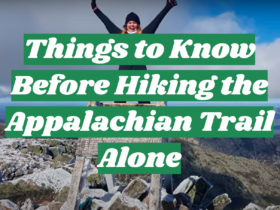
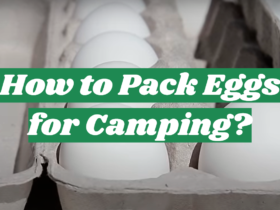

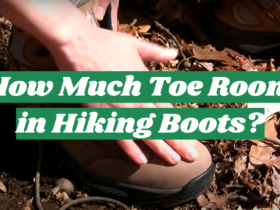
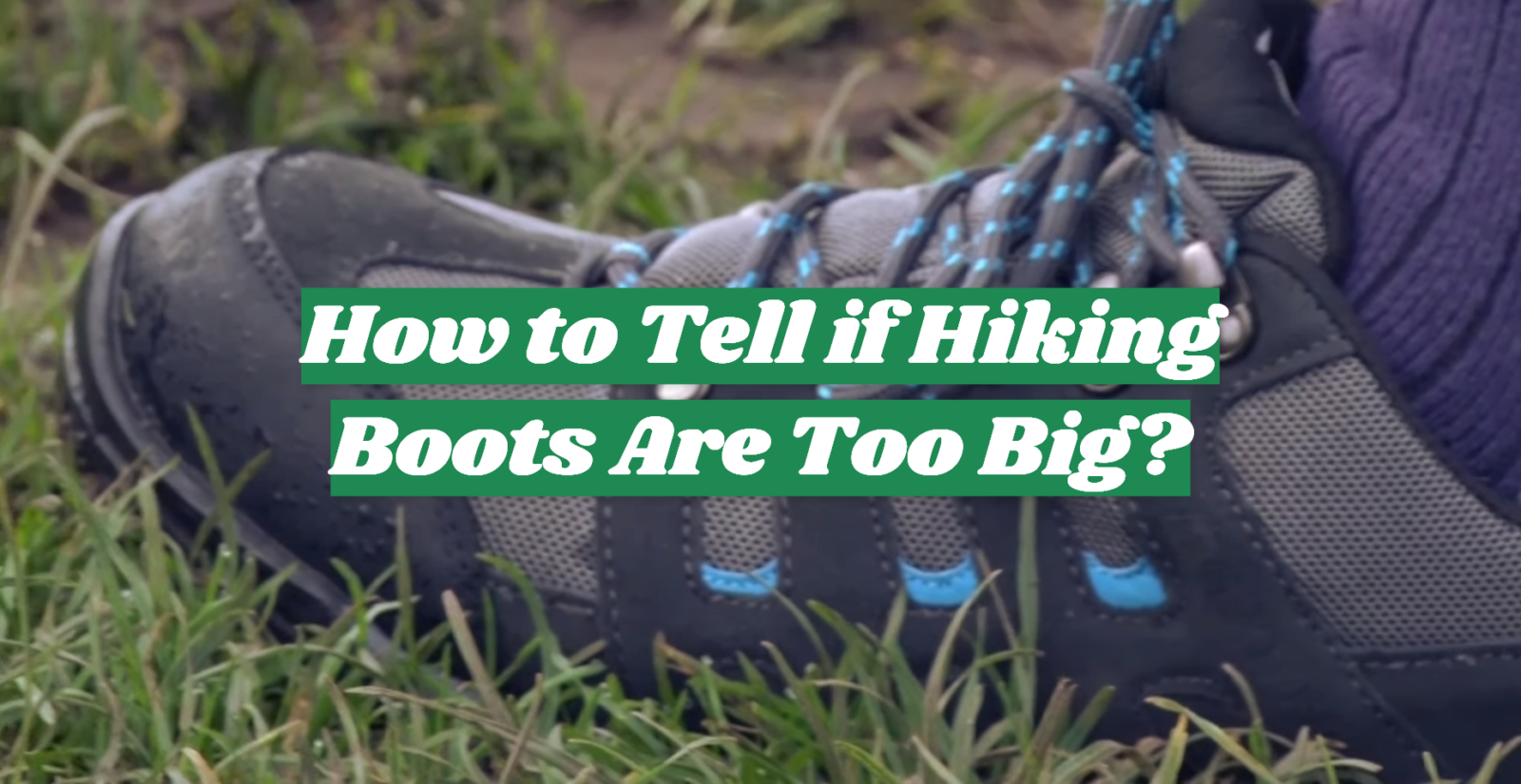
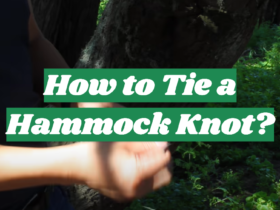
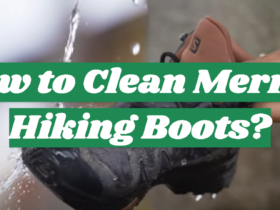
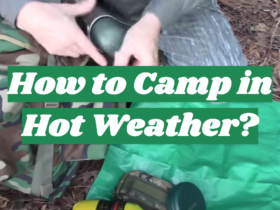
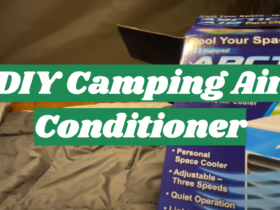
Leave a Review